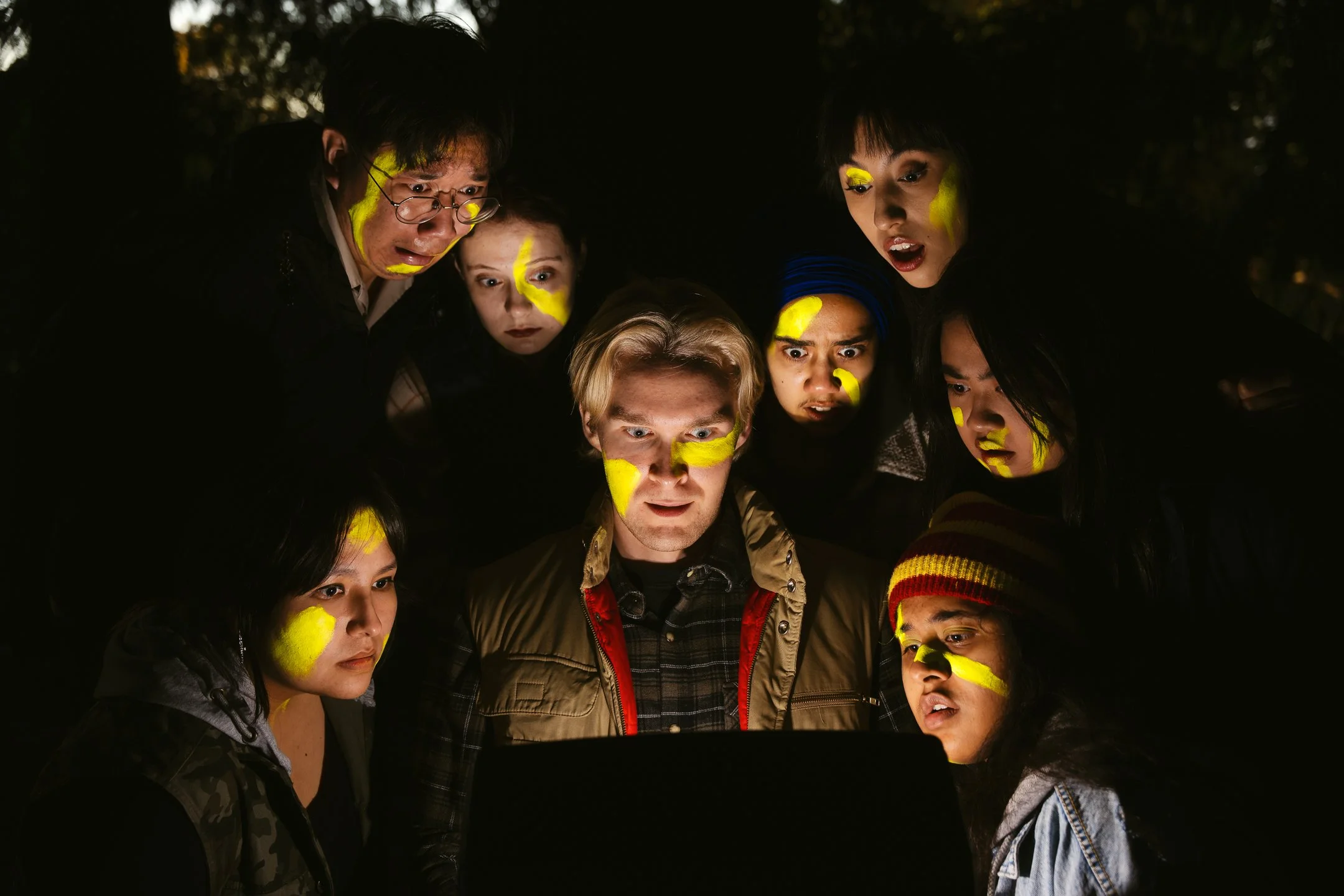EXPLORING IMAGE AGENCY IN EXHIBIT: IMAGES THAT TAKE, IMAGES THAT GIVE
/For many, attending work and school has been from the comforts of home this past year. While rolling out of bed and getting on a video call sounds nice, the media reports that this video call lifestyle may not be so comfortable. With the increase in cosmetic procedures during the COVID-19 pandemic, video calls have evidently changed the way we see ourselves. Displayed from March 18th-27th at the Audain Gallery, Images that Take, Images that Give explore how images—such as our own video call reflections—express agency.
When I visited the gallery, the works prodded for my attention in various ways, leaving me aware of my own role as an agent of change. The exhibit includes a 21 image agency glossary created by the SFU third-year visual arts undergraduate students, along with professor Sabine Bitter and artist-in-residence Heba Y. Amin.
The glossary animates images by pairing verbs such as “captivating,” “hosting,” and “seeing” with the word “image” to create corresponding terms like The Captivating Image, The Hosting Image, and The Seeing Image. All terms inscribed in black letters on the white walls of the Audain Gallery were placed at a variety of heights and latitudes, almost at random. The show had a feeling of self-determination, as not only are titles omitted from the walls but there is no clear movement pattern throughout the space.
Left on Read (ghosts) by Debbie C. | Teresa Donck
Near the entrance to the gallery, Left on Read (ghosts) by Debbie C. attracts me like a letter from an old friend with the phrase, “Dear Reader, hope these letters find you well.” Left on Read (ghosts) suggests that images become detached and unconfined, blur their frames and leap across distances. The poem is in cursive on a large scroll-like page hanging near the gallery entrance. The phrase, “examine the rough raw edges that frame this space” proposes that the gallery space in which the exhibit is contained is not a hard border, but changeable and blurry. The piece reveals that even images that seem innocuous, such as a casually worded letter, can dissolve or reorder their purpose as they choose.
ETA: PI (permanently injured) by Lil Waldegger | Teresa Donck
Lil Waldegger’s work, ETA: PI (permanently injured), beckons conspiratorially from near the gallery’s centre. The piece consists of a dark blue curtain suspended in the gallery space, and cut out of it is the question “how do we misbehave in the dark?” The piece both hides and exposes. One could conceivably use the curtain to hide, but it is rendered useless for this purpose by the holes the words make. Simultaneously, this same question catches the viewer in the act by assuming that they behave mischievously while no one is watching. Similarly, images that have been altered can both hide and expose depending on the intentions of the one altering it.
Dear Diary by Ritz Li | Teresa Donck
Ritz Li’s Dear Diary, a collage of Li’s purchasing records over several months, torments me with an embarrassment that lingers after moving on to other works. The receipts are crumpled and re-smoothed, arranged orderly with edges touching but never overlapping. These slips are not ones you find blowing around on the pavement; they are displayed to invite reading. Dear Diary breaks down the illusion of confidentiality, as the reality of our purchasing records are observed and documented daily. Li uses physical receipts but reminds me that our digital purchasing records are usually blowing in the wind for data collectors to pick up. Codes and algorithms that can’t feel the embarrassment of intruding on someone’s privacy as I do looking at Dear Diary.
Ravneet Kaur Sidhu’s The Reason’s We Do It shows how the dominant image only reveals itself when compared to the images it has overshadowed. Consisting of a long narrow rug beside three metal meal trays, each with a serving of red lentils and a matching cup, The Reason’s We Do It contrasts the view of the busy street outside the gallery window with an atmosphere of quiet nourishment. Next to the installation is a QR code that opens an audio recording from the Kisaan (Farmer’s) Protest opposing the Indian agriculture acts of 2020. The dominant image of Indian culture represented by the meal setting is foiled by the immersion of the scene in the Farmer’s Protest. As with the tranquil setting of the sculpture, the dominant image is often convincing. However, as Sidhu explains in the agency definition of The Dominant Image, domination is truncated when its dominant nature is exposed. I no longer feel the safety and simplicity of a meal of lentils that The Reason’s We Do It promises after hearing the protests necessary to fight for farmer’s livelihoods.
The Reason’s We Do It by Ravneet Kaur Sidhu | Teresa Donck
Heba Y. Amin asks, “can art, in fact, mobilize change? And should we be expecting this from art in the first place?” In the case of the rise in plastic surgery, it is clear that seeing ourselves on Zoom for hours a day mobilizes some to change their appearance. Images that Take, Images that Give offers no answer but shows the many ways that images enact their agency upon their viewer. We cannot control how an image affects us, nor can an image control how we react to its effects. As I leave the gallery, I wonder if the border of the gallery is made permeable by the way these images continue to enact their agencies on me after I step outside.









